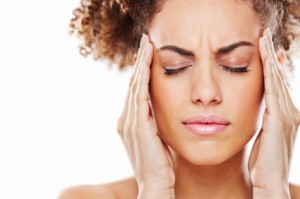I’m one of those people who never gets headaches. I know – how annoying.
But though this seems like a good thing – as it is – sometimes I wish I knew what a headache felt like. Then I could better sympathize with headache sufferers around me, like my mother and husband, who frequently endure painful migraines. Watching them agonize is almost as painful as having a headache myself.
While much is still unknown about the cause of headaches, progress is being made, especially in the way of why migraines affect three times more woman than men, and why one in four women has experienced a migraine.
In a recent article from NPR, Dr. Andrew Charles of the Headache Research and Treatment Program at UCLA, explained exactly what happens inside a person’s brain when they experience a headache.
Charles describes the event as a neuro-physiological occurrence during which waves of electrical activity travel through the various control centers of the brain, starting with the vision center and then onto the sensation center, which is why sufferers can experience pain in and around the eyes, and numbness or tingling like needle pricks around various places of the head. The electrical waves then travel onto the portion of the brain that controls language, which can affect speech clarity, and the ability to find the right words and to concentrate.
Scientists have long studied the cause of migraines, which can be any variety of factors including loud sounds, lights, scents and sudden movements. They have also been linked to genes, meaning the risk of migraines can be hereditary. But more recently, researchers have thought migraines to be caused by hormones – namely estrogen, explaining why more women endure them than men.
According to neurologist Jan Lewis Brandes, who founded the Nashville Neuroscience Group, migraines are now being linked to hormonal fluctuation, which further explains why young boys suffer migraines more frequently than young girls, until girls begin their menstruation cycle. Brandes says once girls begin their cycle, their hormones fluctuate up and down and the number of migraines they experience drastically increases.
Though there are currently medications on the market to help combat the pain, length and frequency of migraines, no cure-all pill exists yet. This leaves migraine sufferers desperate for relief, especially since migraines have been shown to cause permanent changes in a person’s brain, and leave them at a higher risk of stroke. This is why researchers like Brandes and Charles do the work they do in an effort to find more effective treatments for migraine sufferers – both men and women alike.
Also Read:
When Migraines Attack: How to Stop Them Before They Start
